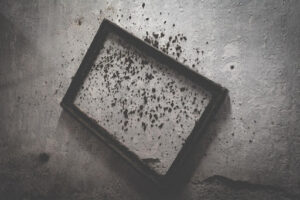Can Black Mold Kill You?
People faced with black mold in their house or surroundings often ask, ‘can Black Mold Kill’? The answer is no for most healthy people, but yes, it can threaten your health.
‘can Black Mold Kill’? The answer is no for most healthy people, but yes, it can threaten your health.
If you have symptoms of hives on the skin or respiratory problems, they may be a consequence of the presence of black mold in some corners of your house. Even if you don’t have any symptoms, black mold can be present in your home and endanger your and your family’s health.
Let’s discuss this further, explaining the consequences of the presence of black mold and how you can get rid of it!
Dangers of Black Mold on Health
Among all the types of mold that exist, the most damaging to health is black mold. For this reason, it is important in the first place that you learn to identify it, know what the dangers and symptoms of having black mold are at home and get down to work to eradicate it once and for all.
What Exactly is Black Mold?
Black mold is the name commonly attributed to the Stachybotrys Chartarum fungus, an extremely dangerous microorganism for humans. Its spores can penetrate and weaken the immune system, producing a series of symptoms that present show how health is deteriorating.
Toxic black mold can be identified when it has a greenish-black color and is regularly slimy, and this is because a moist surface forms on it. However, when it dries up from losing its water content, it changes its color. It begins to turn amber and look rather dry and dusty rather than wet and slimy.
This type of mold regularly appears on ceilings and walls when humidity levels are very high in a room for a long time. However, it is also a typical fungus of hot or tropical climates.
Black mold does not grow as fast as most types of mold. It takes between 8 and 12 days to colonize the wall or ceiling with constant humidity. In addition, black mold kills other types of mold nearby and takes over their environment. That is why it is important to remove moisture from interior walls immediately.
Now, toxic black mold is not the only type of mold that presents these characteristics. Therefore, it is always best to consult an expert who will evaluate it with microscopy and determine its toxicity. Even when it does not turn out to be that type of mold, it surely becomes necessary to treat the affected ceilings or walls.
Where Does Black Mold Grow?
This mold grows outdoors, in the garbage, and on the ground in most cases. It can also grow indoors or in damp cabinets. To grow, it needs materials with a low nitrogen content and a high cellulose content, materials with which most of the interior of homes are built.
The bad news is that when black mold grows indoors, it regularly does somewhere out of your sight, especially since it requires a lot of continuous moisture. When there is some hidden water leakage, either within the walls or under the floors, the humidity can facilitate the production of black mold.
Health Hazards and Symptoms of Black Mold
The greatest risk of living in a room infested with black mold is developing lung disease from the spores that it releases into the air. The toxic symptoms that black mold commonly causes include dermatological and respiratory allergies. It also depends on the amount of mycotoxins to which a person has been exposed. In addition, black mold can also affect your pets.
The diseases caused by black mold are nothing more than a fungal attack of these mycotoxins to the body, a toxic substance, typically spores, that being so small can easily enter the body and even affect the neurological system.
People most vulnerable to black mold include babies, young children, pregnant women, the elderly and people with weakened immune systems.
Symptoms of Exposure to Black Mold
Below are some of the health symptoms caused by black mold:
- Difficulty breathing
- Edema
- Ongoing allergies
- pulmonary hemorrhage
- Mental and Neurological
- Confusion
- Slow reflexes
- Dizziness
- Mental clouding
- Eye problems and damage
- Eye inflammation
- Jaundice
- Dermatological Problems
- Skin itching
- Dermatitis
- Jaundice
- Circulatory system problems
- Arrhythmia
- Low blood pressure
- Miscarriage
- Immune system problems
- Soft spot
- Joint pain
- Chronic fatigue, among others.
How to Remove Black Mold Effectively?
Firstly, you should not try to eliminate black mold on your own if you have no experience. Instead of removing it, it can release huge amounts of mycotoxins into the air that will undoubtedly worsen your symptoms or people that live in the house.
Consider hiring professionals who have the right solution and equipment to remove black mold from the affected areas and eliminate all its traces. It is also necessary to hire a professional company to eliminate the root of the humidity, such as water damage; otherwise, the black mold will sooner or later reappear. 911 Restoration of Orange County has been offering its restoration and remediation services of water damage and mold for homes and offices. So, if you are faced with such a situation and need a quick solution, contact 911 Restoration of Orange County before any further complications occur.


